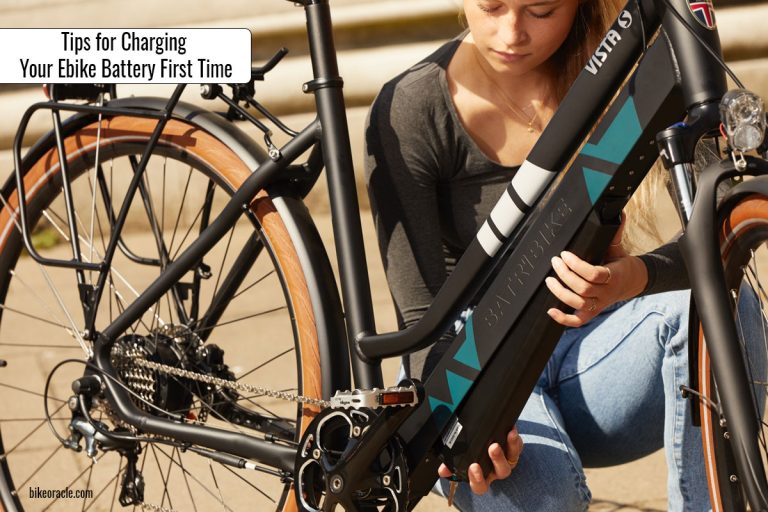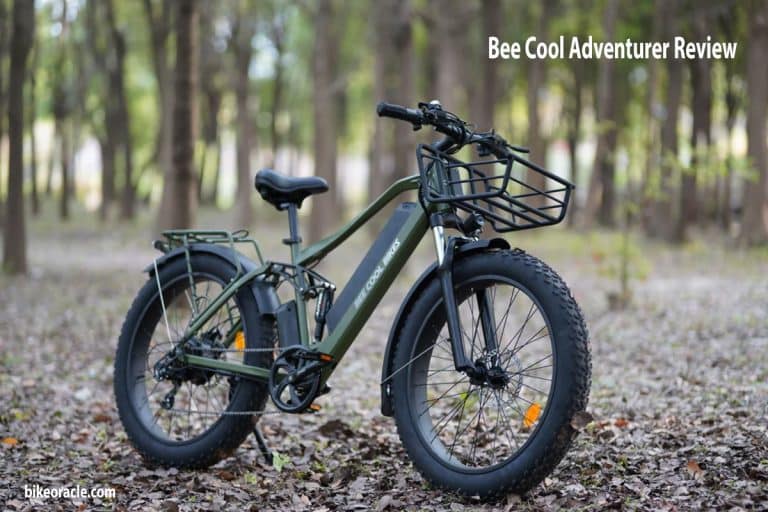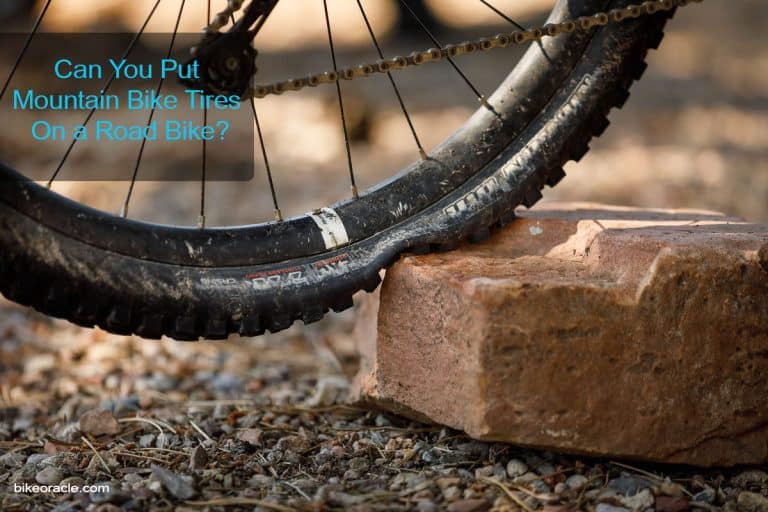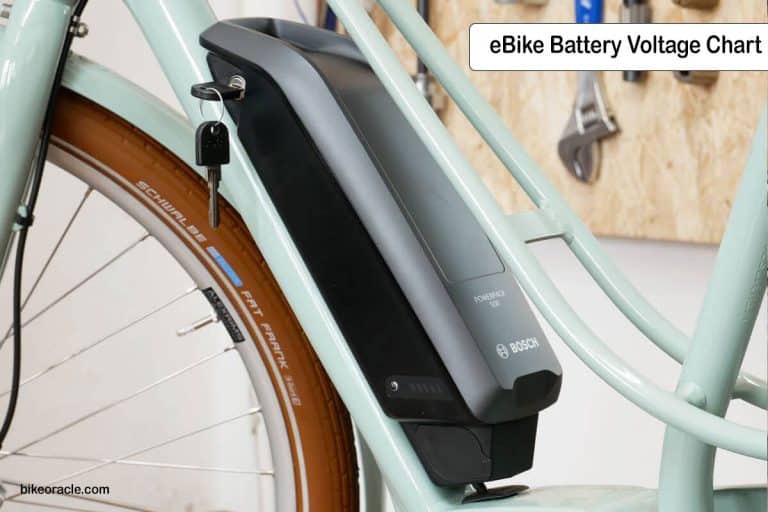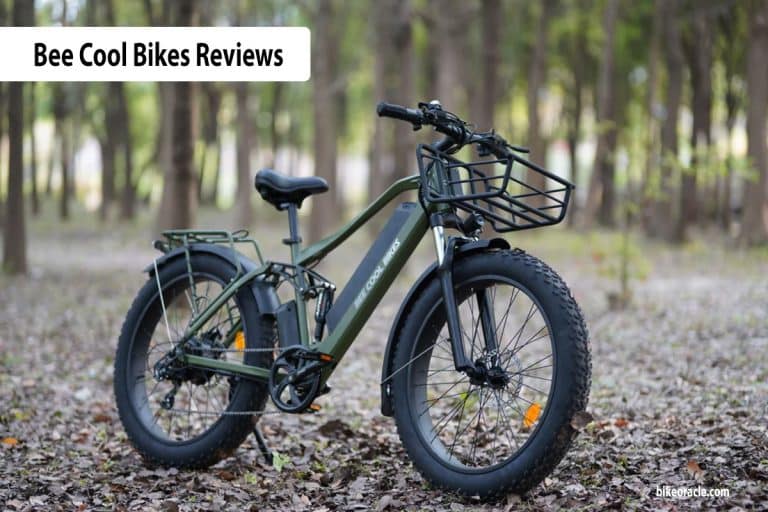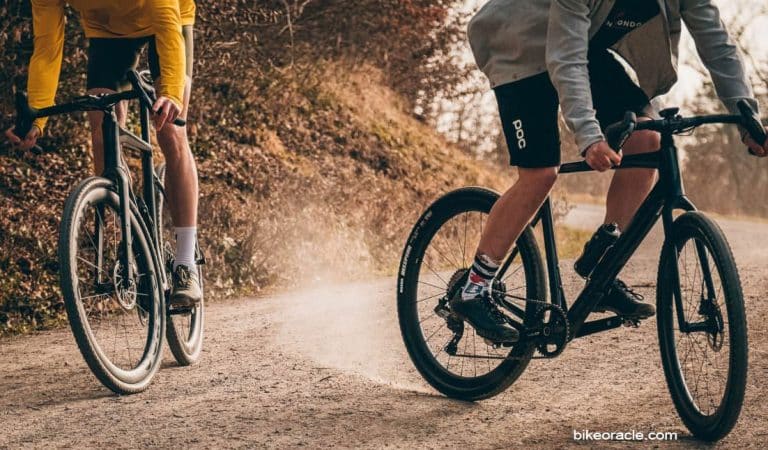How Fast Can Road Bikes Go? – [Answered]
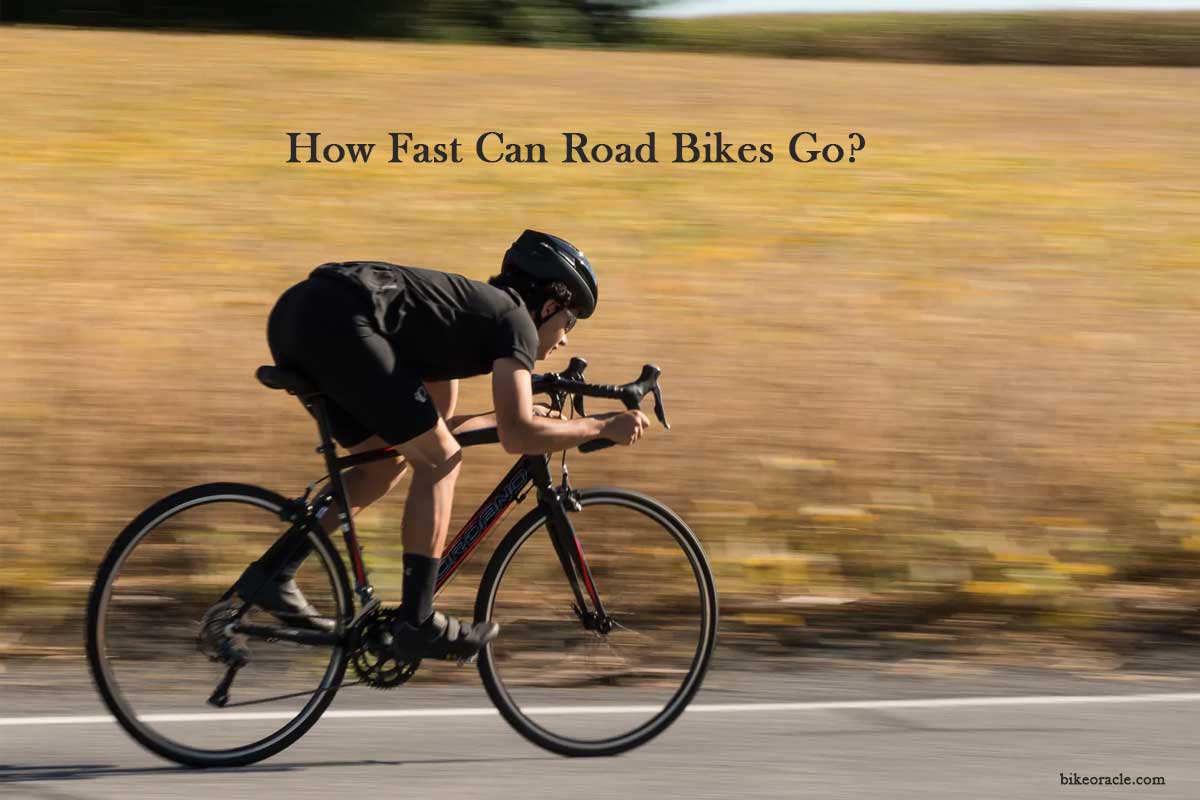
Are you curious about how fast a road bike can go? Your bike’s speed depends on many factors, including but not limited to: the rider and the quality of the bike. The rider’s skill is important because you cannot go as fast if you are still new to cycling. The higher your skill level, the more control you have over how fast your bike goes. Speed also depends on how well your bike is maintained.
A poor-performing road bike will only allow you to go at a maximum speed of 25mph, whereas a high-quality racing bicycle can reach speeds up to 70mph. The frame and wheels of a road bike cannot be adjusted or changed without replacing them entirely. Therefore, if a rider wishes to go faster than their bike can take them, they must either change bikes or take a road trip to another town with fewer laws. Today, we will discuss different factors affecting how fast a road bike goes. So, let’s read along to learn more about different factors affecting how fast a road bike goes.
What is an excellent average speed on a road bike?
This depends on a lot of factors. You will have to consider wind, slope and even the type of bike you are on. With that being said, the average speed range for a beginner just starting their cycling career is between 12 – 16 mph (20 km/h). Pedaling smoothly and without interruptions shouldn’t give you any trouble. The bigger problem would be stopping suddenly when someone honks at you from the car behind.
The average speed on a road bike is between 18-25 mph. Generally, the faster one goes, the more likely one will encounter patches of rough pavement and potholes that can force one to slow down or stop altogether. To maintain this speed, your riding position should be low and relaxed with your hands on the drops. You should also consider purchasing a set of racing wheels with grippy tires for smoother rides.
Factors That Can Affect Bike Speed
Your bike’s speed can depend on many physical factors. First-time riders need to understand them to maintain a constant and safe speed, or else they may suddenly speed up or slow down unexpectedly.
1. Weight
The most common factor is the rider’s weight. The more a rider weighs, the harder it becomes to pedal, and the slower their bicycle moves forward. A heavier person will also have a more challenging time with hills than a lighter person. A heavier rider will also need more power to reach the same speed as a lighter rider.
2. Body Position on the bike
Another factor is body position on the bike. Some people stack their bikes more than others, meaning that the weight of their upper body affects the balance and speed of their bicycle. Stronger riders often joke about “pushing” on steep hills instead of “pulling.” The taller a rider is, the more important this becomes.
3. Your Route
Your route can affect your bike speed. For instance, you might be travelling flat or downhill, which would definitely increase your speed. If you travel uphill, however, you will naturally have to reduce your speed because it’s an exertion on yourself and the bike. You will also slow down if there are more turns or vehicles on the road. Even if you ride around the crowd, you must slow down.
4. Tires And Wheels
The tires and wheels, two parts of the bike, have a great deal to do with your speed. If holes are in the tires or if they’re flat, you will slow down a lot. On the other hand, worn-out wheels can decrease your speed because they aren’t as efficient as new ones.
Read more: Why are Bicycle Tires so Expensive?
5. Gearing Systems
Gearing systems are used to control speed. The bigger the gear is, generally speaking, the slower you move. But this is only a general rule. For instance, if you’re traveling on the highway, a bigger gear will be required to maintain speed. The reason is that you’re going extremely fast, and there aren’t many turns or obstacles that need you to slow down.
6. Suspension Systems
The suspension system, or shock absorber, dramatically impacts how fast your bike moves. The higher your tires’ air pressure concerning the shock absorber’s air pressure, the slower you’ll move.
7. Strength
The strength of your bike is also a factor that can affect bike speed. If your bike is too weak, it won’t go as fast as a stronger one with the same accessories.
8. Resistance
Resistance, or friction, is also something you must consider about how fast you move. It’s essential when driving uphill or against the wind. The more resistance there is, the slower you’ll move overall.
Ways To Improve the Speed of Your Road Bike
A lot of people love to bike, whether it’s for leisure or transportation. However, some people may feel that they can improve the speed of their road bikes. Here are some ways to improve your road bike’s speed and help you get around faster and safer.
- Don’t be overweight – Walking requires less effort than running or biking due to the lower energy costs of gravity-based locomotion. For this reason, it is better not to carry excess weight on your body while riding a bike. This can make a difference in terms of balance and build up fatigue faster than lighter people than you are, leading you to fall off the bicycle at times.
- Be Fit – A fit person has a better aerobic capacity, which is the ability to burn calories in her body. For this reason, a fit person can ride faster than someone not in shape. This means that you must work out if you want to ride faster or not. You can take swimming and cycling classes at the gym to get fit if you have no idea how to do it properly. Cycling unfit can be hazardous, with the risk of neck injuries, elbow and knee injuries, and back injuries very high compared to healthy and fit people.
- Checking and Adjusting Tire Pressure – The tire pressure of the road bike determines how fast you can ride the bicycle. The good thing is that you can use a pump to inflate or deflate the tire pressure, which can work to your advantage if you want to adjust it when riding. Also, be sure not to keep your tire inflated lower so it will not get damaged in the long run. This can cause an explosion or bursting of the tires, which are both very dangerous and inconvenient.
- Go with a Lighter Bike Frame – Lighter bike frames mean a lighter bike overall, giving you more riding speed. This means that you can ride faster while at the same time feeling more lightweight, which can sometimes lead you to think that you are not even on a bike. This will be better so long as it fits your body frame and as long as it is not too loose.
- Get Aerodynamic Wheels – Faster wheels mean a faster bike speed and more efficiency. You can get aerodynamic wheels by ordering them online to have them shipped to your address or buying them in biking stores. Either way, be sure that you only get the type of wheel that’ll fit in with your road bike’s parameters for safety and convenience.
- Lowering the Handlebars – Lower handlebars can make your ride faster because of the aerodynamic effect. But it will be best to ask your bike shop if they can advise you whether you should do so or not before doing it yourself. This way, you’ll be sure that the handlebars will not move while riding, which can be very dangerous. Also, adjust the handlebars according to your height.
- Improve Aerodynamics – You can improve the aerodynamics of your road bike by getting sports clothing for biking. Sports clothing will help to reduce air drag, which means less energy is needed to allow your body to glide through the air while riding on the bicycle. This means you’ll ride faster and for prolonged periods to cover greater distances before running out of breath.
- Ride With Trained Cyclist – Be sure that trained cycling cyclists ride your bicycle. This will still allow you to ride safely, but your pace could also increase because the cyclist’s skill has been improved. Also, this will enable you to make adjustments if something goes awry, which can be very useful in the long run so that it does not ruin your recreational or transportation trips.
- Have some music in your ears – Playing music, or lesser-quality ones can be best suitable for racing on a road bike. This is because the faster songs will encourage you to ride faster and more excitingly. Also, it gives you a chance to keep up with the rhythm and pace of the music, which can be very motivational for someone who is not used to biking at high speeds.
- Handle Your Bike Properly – One tip for handling your road bike properly is to wear gloves so that your hands will not slip off the handlebars as you ride around. This is also important regarding safety. More practice makes perfect, so be sure to handle your bike correctly and safely if you want to increase speed while riding it in the long run.
How Fast Can Professional Cyclists Go?
It’s not just about speed; it’s about staying in the zone that allows you to perform your best. As Louis, among others, has said, “speed is nothing without control.” A professional cyclist does a lot more than getting up to the line first and fastest at the start of a race. They are looking for their niche and finding that little window where they can optimum use their abilities. When they see that sweet spot, they need to learn how to stay there and maximize the potential of their power output.
We are all looking for that little pocket where we can produce our best, and we’re constantly trying to maximize whatever natural ability we have. The difference with professional athletes is that they put more time in than the rest of us might be willing to commit. It takes professional cyclists hours to get ready and ride hundreds of miles. And then they can go fast. Here’s a table of the top 10 fastest bicycle speeds ever recorded, together with their average speed in kilometers per hour (kph):
1: The cyclist Gustav Larsson went 222.7 kph in 1939 on a track bike
2: Australian cyclist Graeme Obree went 220 km/h (136.3 mph) in 1995 on a track bike
3: The cyclist Guangxiao He went 225.67 kph (139.78 mph) in 2004 on a track bike
4: The cyclist Gwen Jorgensen went 227.64 kph in 2014 on a track bike
5: The cyclist Mark Cavendish went 230 Kmph (143.5 kph) in 2011 on a track bike
6: The cyclist Laurent Fignon went 230.5 Kmh (143.8 mph) in 1987 on a track bike
7: The cyclist Fabian Cancellara went 230.7 Kmph (143.9 kph) in 2008 on a road bike
8: The cyclist Christian Vande Velde went 231.5 Kmph (144.8 mph) in 2006 on a track bike
9: The cyclist Freddy Maertens went 231.74 Kmh (144.9 mph) in 1978 on a track bike
10: The cyclist Chris Boardman went 233.5 Kmh (145.7 mph) in 1996 on a track bike
What Are Some Of The Fastest Road Bikes?
Almost all manufacturers will brag about the speeds of their newest road bike model. But the real test is what speed the bike does on the streets or the racing track. Following are some of the fastest bikes out there:
| Ranking | Bike | Median Speed in km/h | Median speed in mph |
|---|---|---|---|
| 1 | Cannondale SuperSix EVO Carbon Disc Ultegra Bike | 25.6 | 15.9 |
| 2 | Cannondale CAAD Optimo 1 Bike | 25.3 | 15.7 |
| 3 | Co-op Cycles ADV 2.1 Bike | 25.1 | 15.6 |
| 4 | Diamondback Haanjo 3 Bike | 25.0 | 15.5 |
| 5 | Diamondback Haanjo 2 Bike | 24.7 | 15.4 |
Conclusion
The average speed for most bikers is about 10-20mph, but the top speed that a rider can reach depends on their own experience and the type of bike they use. The fastest bikes are lightweight, aerodynamic, and therefore suitable for long trips at high speeds.
